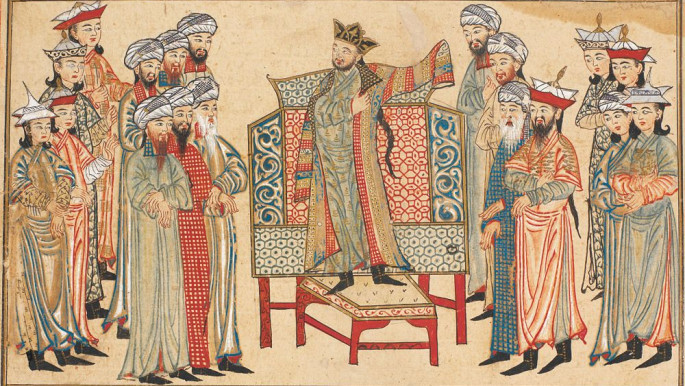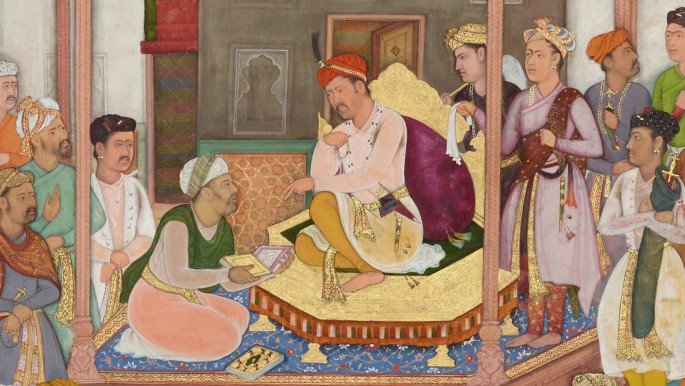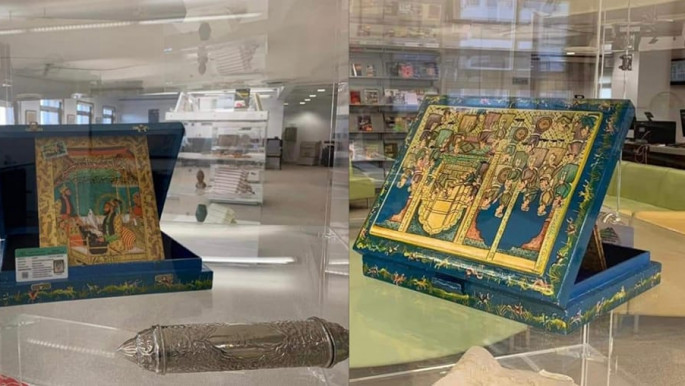
From robes of honour to spell-bound books: The royal custom of gift-giving in Arab and Muslim culture

While the bisht awarded to Messi probably didn't cost more than $2000, the fact that one Omani lawyer has since offered up to $1 million for the cloak reveals a lot about the status of gifts in Arab culture.
The reason for this inflated price is simple: it's a gift from the Qatari Emir Sheikh Tamim bin Hamad Al-Thani to one the most decorated footballers for generations. Such a gift now acquires the status of a "robe of honour".
Yet this is nothing new. Gifts from nobles and kings have always been appreciated in Arab and Muslim cultures.
"The noble or the king would 'take off' his own coat and put it on the subject he wishes to honour. This is why it is called 'Khil’a' in Arabic, which means 'a garment taken off'"
In the ancient Middle East, the most common gift that a noble, official, prince or king could have presented to somebody he admires is a robe of honour. Ideally, the noble or the king would “take off” his own coat and put it on the subject he wishes to honour. This is why it is called “Khil’a” in Arabic, which means “a garment taken off”.
|
This act or protocol adds extra value and honour to the garment because it was used to cover the noble body, so it is a symbolic extension of his prestige, nobility and political or religious authority.
This tradition continued with Islam, as the prophet used to accept gifts and reward people for giving them. So, when the poet Ka’ab ibn Zuhair praised him in a poem, Prophet Mohammad took off his own cloak and bestowed it on him.
|
Since then, Caliphs and Sultans established royal textile workshops, that produced special robes in different sizes.
These robes usually had gold, silver and silk threads, while sometimes decorated with precious stones. In the illustration below, we see Sultan Mahmoud of Ghazni (10th century) while wearing a “Khil’a” sent as a gift from the Abbasid Caliph in Baghdad, giving him a symbolic religious Arab Caliphate approval.
In his book Picnic of the Amusers and Present of Caliphs, King Afdal Abbas Rasuli (14th century/Yemen) dedicates a chapter to “The King’s duties towards who presents a gift to him”.
He mentions a variety of protocols regarding the gift dedicated to the ruler, depending on its value.
The author adds that there is a special clerk at the royal court who takes care of gifts. He should attend to the gifts and send rewards in return, after informing the king about them, no matter how big or small the value of the received gift.
If we look at the types of royal gifts exchanged between nobles or with 'common' people as observed in Islamic art collections, we find decorated books, jewellery, textiles, artefacts, painted clothes, personal items, antiques, weapons and other objects.
All were made to do their original function perfectly, but with the added value of special artistic beauty. Of course, the money of gold is considered among the best gifts but there are also some “living gifts” that might exceed the value of all gifts.
In a medieval world where slavery was acceptable, presenting a handsome slave or a beautiful concubine would be the ultimate gift, especially if the receiver is already in love with him/her.
In addition to slaves, we should not forget the importance of gifting horses and mules, which are equivalent to cars in our time. Pets and exotic animals were presented for companionship and prestige.
In general, kings, viziers and nobles were collectors of books, not only to educate themselves but also to show themselves as patrons of arts, literature and science.
Many premodern Arabic books were written at the request of officials or dedicated to them, but they should look extraordinary, that’s why books were painted, gilded and inset.
A few years ago, as an author with a fascination with Arab and Islamic material culture and vintage-inspired objects, I decided to create a royal gift inspired by ancient royal books. I wrote and designed a book called Boon-Companionship and the Courtiers (a letter to his majesty in the literature of kings) dedicated to the late Sultan of Oman, Qaboos bin Said.
At first, I designed a long big copy as an initial handmade model, decorated with relevant Islamic art paintings.
The binding of the cover was made of natural leather dyed in Maroon-a royal colour in many traditions-and decorated by a matching accessory. After that, I was told that the book should be printed to be received by the Sultan.
So, I designed a shorter final version, printed in a limited edition with lavish specifications. The cover has a velvety touch, decorated with ancient paintings of Mughal Sultan Aurangzib (17th century/India) on both sides.
The papers are gilded along with the cover information. At the cover periphery, there is an Omani stamp of Qaboos to emphasise the customized letter style. Yet I felt that the royal copy should be unparalleled and more luxurious than the other copies in the limited edition. So, I turned the painted gems into real jewellery and the cover became inset with 22 precious stones of diamonds, emeralds, rubies, citrines and garnets.
The book is put in a matching box, decorated by a hand-painted Mughal Sultan attended by his courtiers. Attached to the box there is a vintage cylinder letter holder, engraved with the Sultan's name on one side, and “may God protect him” on the other side. It contains a handwritten letter on a piece of paper made of palm leaf.
Unfortunately, the gift wasn’t delivered to the Sultan due to his health conditions in his last years. However, like the fate of most royal gifts, they would end up being presented or sold to somebody else and then regifted, resold or inherited until it becomes part of a private collection or displayed in a museum.
Jamal Bakeer is a content creator, author, audio-visual storyteller and expert in Arab/Islamic heritage and civilization.
Follow him on Twitter: @JamalBakeer




![Minnesota Tim Walz is working to court Muslim voters. [Getty]](/sites/default/files/styles/image_684x385/public/2169747529.jpeg?h=a5f2f23a&itok=b63Wif2V)






